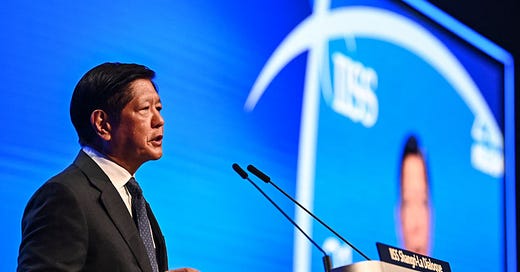Hot Words in South China Sea
Marcos lays out Red line in South China Sea, US has no locus standi in meddling in South China Sea affairs.
Marcos Red Line in South China Sea
BY Gabriel Dominguez (The Japan Times)
With Manila’s relations with Beijing sliding into dangerous territory, Philippine President Ferdinand Marcos Jr. has warned Beijing that if a Philippine citizen were to be deliberately killed in a clash with the China Coast Guard, this would be “very close to what we define as an a…






